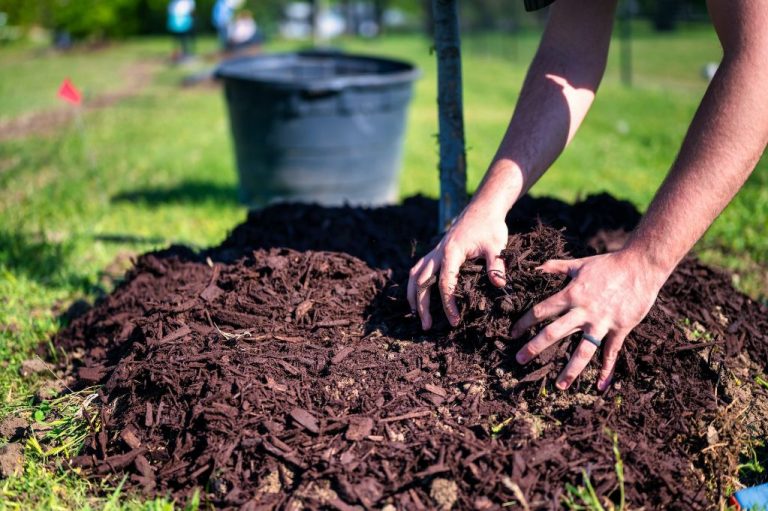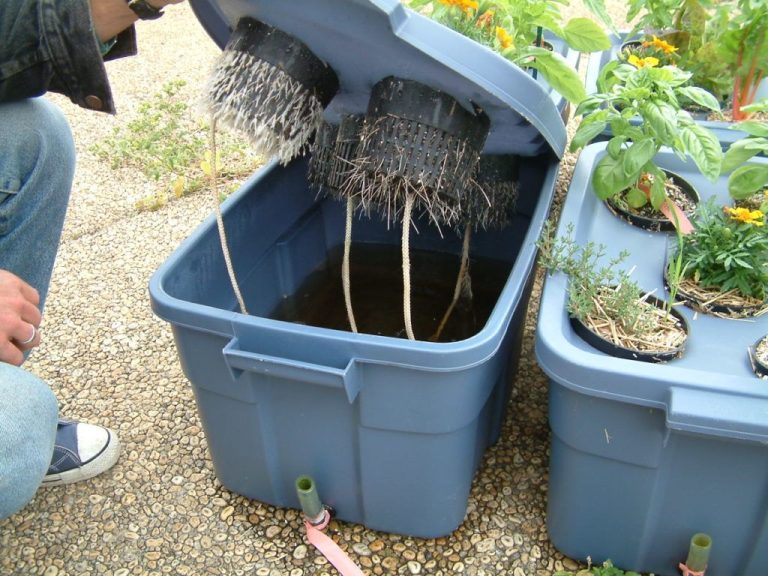Maximizing Yield: Companion Planting In Your Edible Garden
Companion planting is the practice of planting two or more crops together to maximize space and optimize conditions for increased yields and plant health. The term originated in the 1920s from Native American agriculture techniques and includes spatial arrangements of plants as well as timing when interplanting annuals.
The origins of companion planting date back thousands of years in Indigenous agriculture, but the practice became more widely known in the 1920s from biodynamic agriculture principles. The use of companion planting by various cultures was studied extensively by ethnobotanists.
There are numerous benefits to companion planting. Certain plants can deter pests or attract beneficial insects when planted next to other crops. Some plants provide shade, nutrients or support for climbing plants. Companion planting can also help maximize limited garden space. By carefully selecting complementary plants and proper spacing, gardeners can optimize their yields.
Compatible Plant Partners
Certain plants have natural synergies when planted together in the garden. Understanding these partnerships and planting compatible crops together is one of the core principles of companion planting.
Some classic examples of compatible plant partners include:
- Tomatoes & basil – Basil repels pests like thrips, aphids, and flies that can damage tomato plants (Source). Meanwhile, tomatoes provide the structure for the basil to grow upwards.
- Beans & corn – Corn provides a natural pole for bean vines to climb. Beans fix nitrogen in the soil which benefits corn. Shallow bean roots don’t compete with deep corn roots (Source).
- Carrots & leeks – Leeks repel carrot flies. Carrot foliage shades leek roots and retains moisture.
- Lettuce & radish – Radishes mature quickly from shallow roots, letting slower-growing lettuce access space and nutrients.

Understanding these natural partnerships enables strategic planting that maximizes garden yields.
Plant Categories
When planning your companion planting garden, it’s helpful to categorize plants by their benefits and growth habits. Here are some of the main companion planting categories:
Nitrogen Fixers – These plants have nodules on their roots that convert nitrogen from the air into a usable form for plants. Growing nitrogen fixers near other plants reduces the need for fertilizer. Examples include beans, peas, clover, and alfalfa.
Pest Repellants – Strong scented herbs like mint, onions, garlic, and chives help mask the scent of desirable crops, repelling pests. Some plants like marigolds also excrete chemicals from their roots to deter nematodes or other garden pests.
Pollinator Attractors – Flowers like cosmos, zinnias, sunflowers, and daisies will attract pollinators to your garden. Growing them next to fruiting crops and vegetables will increase pollination and yields.
Trap Crops – These are planted to lure pests away from adjacent crops. For example, radishes, nasturtiums, and yellow flowers may help control cabbage moths.
Soil Enhancers – Dynamic accumulators like comfrey, yarrow, and dandelions have deep tap roots that bring nutrients from the subsoil up to the topsoil when the leaves decompose. Growing these near shallow rooted crops provides nutrients.
By understanding these companion planting categories, you can optimize your garden layout for maximum yields.
Interplanting vs Crop Rotation
Interplanting and crop rotation are two different techniques used in gardening and farming to maximize yields. The main difference between interplanting and crop rotation is that interplanting involves growing different crops together in the same area during the same growing season, while crop rotation involves growing different crops in succession in the same area across different growing seasons.
Some key benefits of interplanting include: maximizing space and yields by growing compatible crops together (Intercropping and Crop Rotation for Sustainable Farming); optimizing plant health through pest control and nutrient support from companion plants; and increasing biodiversity.
Benefits of crop rotation include: breaking pest and disease cycles by not planting the same crops repeatedly in the same spot; improving soil nutrition as different crops extract and replace different nutrients; and managing soil erosion risks by alternating deep-rooted and shallow-rooted plants.
Both interplanting and crop rotation can be used together as complementary techniques to maximize the health and productivity of an edible garden.
Maximizing Space
There are several clever techniques you can use to maximize the growing space in your garden, even if you only have a small area to work with. Intercropping, succession planting, and vertical gardening enable you to get more yield out of every square foot.
Vertical gardening involves training vining crops like pole beans, cucumbers, and tomatoes to grow upwards using trellises, cages, stakes or other supports (Source). This keeps the plants tidy and prevents them from sprawling out along the ground. It also better exposes the plants to sunlight. You can trellis climbing crops against walls, fences, or install freestanding structures.
Instead of planting in traditional rows, arrange your plants in more of a patchwork design with shorter plants in front of and in between taller, climbing varieties. Curving rows utilize space better than straight rows (Source). When one crop finishes up for the season, quickly replace it with another to get multiple harvests from the same spot through succession planting.
Container gardening also lets you make use of small or awkward spaces like patios, balconies, and rooftops for growing food. Clustering containers together helps you efficiently use every spare inch of space (Source).
Optimizing Conditions
One of the keys to successful companion planting is making sure you optimize soil, sun, and water conditions to meet the needs of your different vegetable varieties. Some plants prefer nutrient-rich soil while others do fine in average or poor soil. Some need full sun while others thrive in partial shade. Understanding and tailoring to your plants’ preferences will maximize their health and yields.
For example, pole beans and corn make great companions. But corn is a heavy feeder that likes fertile, well-drained soil and full sun. Beans prefer average soil and partial shade. One solution is to enrich the soil around the corn’s roots by mixing in compost or manure. Then plant the beans on the north side of the corn rows so they receive some shade from the taller corn plants. Add trellises for the beans to climb.
Looking at moisture needs is also key. lettuce and radishes work well together, but lettuce needs consistent moisture while radishes can tolerate some drought. Grouping them in low areas or adding extra mulch around the lettuce can help even out the moisture level.
Taking the time to understand and optimize for each plant’s preferences will lead to better health and production. Check companion planting guides or seed packets for details on your vegetables’ needs.
Common Mistakes
When companion planting, it’s easy to make mistakes that can negatively impact your garden’s productivity. Here are some of the most common companion planting mistakes to avoid:
Planting incompatible partners – Some plants simply don’t grow well together. For example, pairing cabbages and strawberries can stunt the growth of the strawberries. Make sure you research which plants make good companions before planting.Source
Overcrowding – It’s tempting to fill every inch of your garden bed, but overcrowding plants can cause them to compete for resources like sunlight, water and nutrients. Leave adequate space between plants to prevent overcrowding.Source
Poor planning – Companion planting takes careful planning to ensure you’re planting the right companions in a layout optimized for each plant’s needs. Plan out your garden beds on paper first to avoid haphazard planting.
Sample Garden Plans
When planning your companion planting garden, it helps to have sample layouts to use as a guide. Here are some sample plans for small, medium and large vegetable gardens showing effective plant pairings.
For a small 4×8 foot garden bed, try interplanting tomatoes with basil, lettuce with cabbage, beans with cucumbers, and carrots with onions. Studies show pairing these plants helps maximize space and growth (source).
For a medium 10×10 foot garden, add more variety with tomatoes, onions, garlic and basil in one corner, broccoli, dill and cucumbers together, and lettuce, carrots, radishes and beets in another section. The Almanac’s companion planting guide provides the ideal vegetable pairings for a productive medium garden (source).
In a large 20×20 foot planting area, you have space for expanded groupings like tomatoes, onions, peppers and basil; cabbage, broccoli, dill and cucumbers; corn, squash, beans and radishes; carrots, lettuce, onions and beets. Follow companion planting principles to maximize yields.
Beyond the Garden
Companion planting principles can be applied beyond just your vegetable garden beds. Consider the entire landscape and ecosystem of your property when planning companion plantings. Certain trees, shrubs, and flowering plants also make good companions for edibles.
For example, pairing fruit trees with bee and bug attracting flowers will increase pollination. According to the Gilmour companion planting guide, planting flowers like cosmos, marigolds, and zinnias around your fruit trees can draw in more pollinators. Additionally, certain shrubs like blueberries can thrive when interplanted with azaleas, rhododendrons and heathers.
Take a whole property approach by scattering edible ornamentals and herb flowers amongst your existing landscaping. Not only will this look beautiful, but it will also create a symbiotic ecosystem across your entire yard.
Getting Started
Getting started with companion planting in your edible garden is easy. Here are some tips:
Purchase companion plants from your local nursery or garden center. Many carry starter plants already grouped into complementary combinations. Refer to companion planting guides to pick the right partners for your vegetables and herbs (https://www.almanac.com/companion-planting-guide-vegetables).
Use companion planting garden layout diagrams and plans to design your planting strategy. Resources like Mother Earth News provide sample designs that optimize plant pairings (https://www.motherearthnews.com/organic-gardening/companion-planting-guide-zm0z11zsto).
Start small. Pick a few simple plant partners to try your first year like tomatoes and basil. Pay attention to sun exposure, water needs and harvesting timeframes when choosing your pairs.
Interplant new seedlings among established plants. Fill empty spots with beneficial companion options.
Observe your plants’ growth and make notes on what works well. Adjust your combinations each season as you gain experience.






